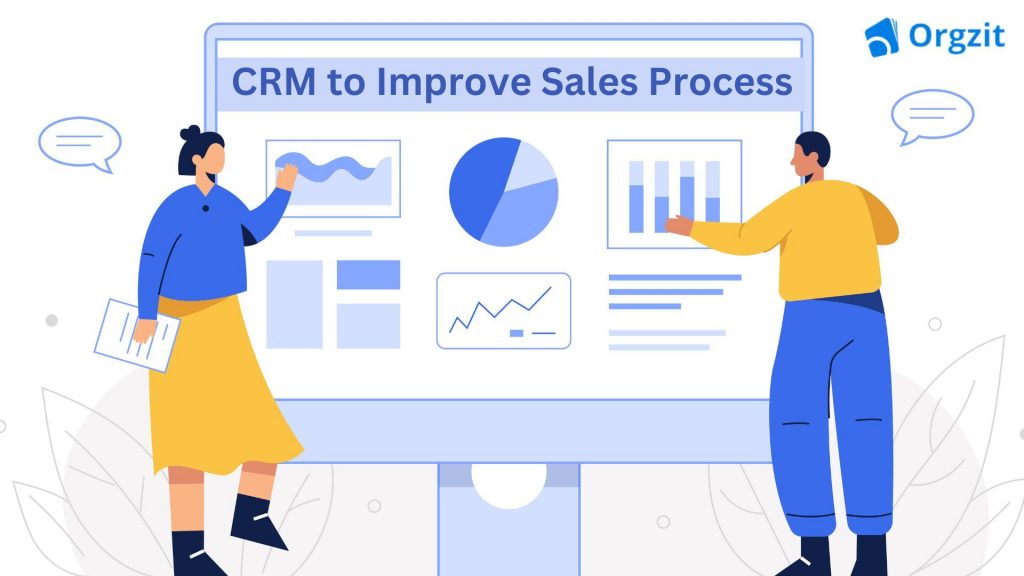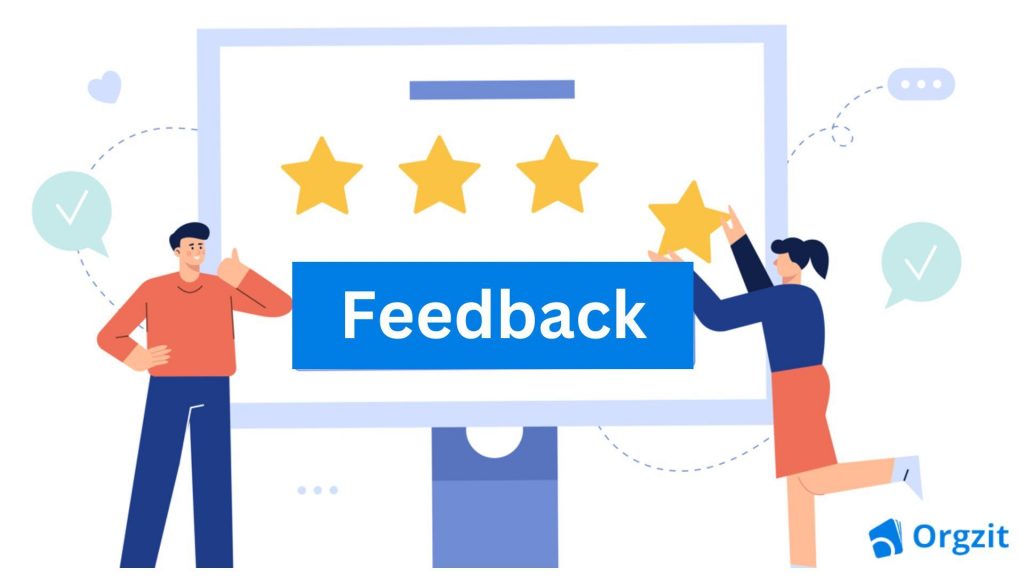11 highly recommended sales practices to improve sales performance
Selling is an art. But you can learn it.
So, how do you improve your sales performance when you are new to this art or trying to up your game?
I am sure you have watched the famous movie, Wolf of the Wall Street. Actor Leonardo Di Caprio shows how to use the “SELL ME THIS PEN” technique by creating urgency in sales in the movie.
That is a classic example of a sales strategy that plays on urgency.
There are plenty of tricks and tips like this that one can apply to sales. Especially in B2B business, sales is a pitch for seasoned business owners, not just consumers. So, you must keep improving your sales pitch as the industry evolves.
To achieve sales, one has to be quick, intuitive, and adapt to strategies that can make the customer buy.
B2B Sales do not happen automatically; they require a well-planned approach. The strategies that align with your business goals will provide the highest possible outcomes and generate revenue for your business.
In this blog, we will discuss the top 11 strategies to improve sales performance:
#1 Know Your Customers
Customers don’t buy products based on product features; they buy products to solve their problems. You should know what problems you are solving to strike a conversation with your customers that makes your prospect buy your product.
Here are a few tips-
- Ask, don’t tell
Asking questions is a great way to start a conversation and learn more about the customer’s needs. Imagine you’re promoting a smart home security system, and you’re speaking to a potential customer who is concerned about the safety of their family. Instead of a straightforward approach, you could say something like:
Have you ever had one of those moments where you’re lying in bed at night and wondering if everything’s okay downstairs?


- Listen attentively
Listen carefully to the customer’s response once you have asked a question. This will help you to understand their needs and pain points better.
- Be helpful and informative
Once you understand the customer’s needs, focus on providing them with helpful information and solutions. This shows that you are reliable and that you value their business.
#2 Build Relationships With Your Customers
Satisfied customers are likelier to buy from you again, spend more money with you, and refer you to their friends and family. Research shows that customers are five times more likely to purchase than new customers.
By following these terms, you build customer relationships:
- Take the time to learn about your customers’ needs, wants, and pain points. This will help you better understand how to serve them and build trust.
- Do something unexpected for your customers, like sending them a thank-you note or offering a discount on their next purchase.
- Create a customer loyalty program to reward customers for their business. This could include offering discounts, early access to new products, or exclusive promotions.
- End regular email newsletters, social media posts, or even direct mail pieces to keep your customers updated on your business and remind them of your value.
#3 Choosing The Right Sales Structure for Your Business
Is your sales organization structured for success? If not, you will miss opportunities to close more deals and grow your business. The right sales structure can help you:
- Align your sales team with your business goals.
- Improve communication and collaboration between sales reps.
- Create a more efficient and effective sales process.
- Give your target customers a clear view of your business.
Here are a few things to consider when choosing a sales structure:
- Your business goals: What are you trying to achieve with your sales team? Are you trying to increase sales, generate leads, or expand into new markets?
- Your target market: Who are you selling to? Are you selling to businesses, customers, or both?
- Your product or service: What do you sell? Is it a complex product or service that requires a high level of expertise to sell?
So, take the time to analyze the sales structures and determine which one is right for your business.
#4 Highlight Benefits Over Features
A simple Google search allows potential customers to easily research your business, products, services, pricing, competitors, and business history.
This means they are no longer easily pressured by salespeople and are more likely to buy from businesses that can clarify the benefits of their products or services.
That’s why it’s so important to highlight benefits over features when you’re selling. Customers don’t just care about what your product or service does; they want to know how it will benefit them.
So don’t just say that your product or service is “great” or “the best.” Instead, focus on explaining how it can help your customers solve their problems, achieve their goals, or improve their lives.
Pro Tip: Customers invest in what is useful and gives them value. So, focus on selling the value of your product or service, not just the features.
#5 Prioritize Promising Prospects
Remember that every prospect, whether successful or not, provides valuable lessons; embrace failure as a stepping towards your approach and making yourself successive.
Investing time in prospects and allocating time to them helps you to improve your sales performance.
Tips for allocating time to prospects
- Schedule a regular time to follow up with prospects
This could be daily, weekly, or biweekly, depending on the length of your sales cycle.
- Use a CRM system to track your interactions with prospects
This can help you stay organized and ensure that you are following up with everyone on time.
- Personalize your outreach
Take the time to learn about each prospect and tailor your outreach accordingly.
- Be persistent
It may take multiple follow-ups to close a deal. Don’t give up on a prospect too quickly.
#6 Monitor and Manage Leads Effectively
Every customer starts as a lead; turning leads into paying customers takes time and resources. Once you’ve captured a lead, you qualify it as a prospect, leading to a paying customer.
Lead management is nurturing and qualifying leads until they’re ready to buy from you. It’s about building relationships with leads, understanding their needs, and providing them with the information and resources they need to purchase.
Without lead management software, sales reps might miss precious leads or spend time on those not ready to purchase.
You can do a couple of things to improve your lead management:
Qualify your leads– Not all leads are created equal. Some are more likely to buy from you than others. That’s why qualifying your leads and focusing your efforts on the most likely to close is important.
Nurture your leads- Once you’ve qualified them, it’s important to nurture them until they’re ready to buy from you. This means providing them with valuable content and resources and regularly contacting them.
Remember, this process is important for your sales success, so this can make a difference between now and in the future. It’s about ensuring every lead finds its way to becoming a satisfied customer!


#7 Free Trials to Convert Prospects Into Customers
Businesses or services need free trials to target customers. This helps them to grow and help to improve their sales prospectively.
- Offering free trials is not just about giving something away for free. It’s a strategic move to specify the value and excellence of your product or service, making prospects into paying customers.
- Providing a better understanding of your business is more than offering structured details to your target customers. It involves explaining how your offers benefit them and how they can positively impact their lives.
- Once prospects have completed their free trial, you have a clear process for converting them into paying customers because hands-on experience provides a deeper understanding.
#8 Comparisons with Competitors
People believe in uniqueness and value. Comparing your business to your competitors is not just something you should do in your marketing materials; it is a practical step that can significantly impact your sales performance.
So, you must be clear about how your business differs from others.
How do you prove it? You must need to specify your
- Unique Selling Points
- Value Proposition
- Brand Identity
- Customer Experience
- Market Research
- Innovation
- Target Audience.
By clarifying this, you can make the potential customers see the value in your business and why they should choose you over the competition.
#9 Customers’ Testimonials and Responsive Feedback
Before purchasing, most people research the products and services they’re interested in. They read reviews, compare prices, and look for customer feedback.
That’s why leveraging customer testimonials and responsive feedback is important to improve sales performance.
Feedback from your existing customers, offering customer experiences, and displaying customer testimonials can attract customers that help to make them more likely to become loyal customers.
When people see that other customers have had positive experiences with your business, they’re more likely to be confident in purchasing.


#10 Use Software to Improve Your Sales Process
A CRM system is crucial for improving sales performance in your business. It helps organize customer data, manage cold emails, follow-ups, and reminders, and close significant leads or prospects.
Here are some examples of how businesses use CRM systems to improve sales processes:
- A company uses a CRM system to track the progress of its sales leads. This helps the company identify leads likely to convert so they can focus their sales efforts accordingly. As a result, the company has increased its lead conversion rate by 20%.
- A marketing agency uses a CRM system to automate email marketing campaigns. This frees the marketing team to focus on more strategic tasks, such as developing new content and creating social media campaigns. As a result, the agency has increased its leads by 50%.
- A sales team uses a CRM system to track the performance of its sales reps. This helps the team to identify struggling sales reps and provide them with the support they need to improve their performance. As a result, the team has increased its sales by 10%.
Here are some specific use cases:
- Lead management: A lead management system can help you track your leads from initial contact to close so you never miss a follow-up.
- Opportunity management: A CRM platform can help you track your sales opportunities so you can see which deals are in the pipeline and which are most likely to close.
- Customer relationship management: A CRM system can help you manage your customer relationships so you can provide excellent customer service and build long-term relationships with your customers.
#11 Referral Strategies
In a business, you aim to generate leads or prospects who eventually become your customers.
These customers, in turn, can act as advocates, referring others to your business.
- Referred customers are likelier to have a higher lifetime value than non-referred customers. This is because they are already familiar with your brand, products, or services and are likelier to be loyal customers.
- Referrals help you to reach new markets. When customers refer you to their friends and family, they introduce you to new networks and markets. This can help you expand your reach and attract new customers you may have yet to be able to reach on your own.
A couple of tips you can do to get more customer referrals:
- Provide excellent customer service.
This is the foundation for any successful referral strategy. When your customers have a great experience with your business, they’re more likely to recommend you to others.
- Make it easy for customers to refer you.
Create a referral program that makes it easy for customers to refer their friends and colleagues to your business. You can offer referral incentives, such as discounts, gift cards, or other rewards.
- Ask for referrals.
Feel free to ask your customers for referrals. You can do this in person, over the phone, or via email. Just be sure to personalize your request and make it easy for customers to say yes.
- Thank your customers for referrals.
When a customer refers you to someone, thank them for their business. You can send them a note, call them, or send them a small gift.
Conclusion
Focusing on what matters most to your customers – their biggest needs and pain points – and providing solutions makes your sales truly effective.
Get rid of anything not essential to your business to improve your sales performance. Be clear about your vision and values and what you want to achieve with your business.
Aim to be helpful and make people’s lives easier. The best way to build customer loyalty and gain referrals is to make your sales efforts impressive for your business.
FAQs
Sales in business is a specific process of selling products or services, which involves the identification of potential customers with buying capabilities and needs; understanding their needs and targeting them to make a purchase is of utmost importance.
Understand your customers inside out, provide them with free trials and feedback, prove yourself better than your competitors, and ensure the customer understands his advantage by choosing software and referral strategies.
It’s mandatory to understand your customers because this enables you to understand better your products or services’ specific needs and preferences and increases customer satisfaction and loyalty for your business.
Customer feedback is essential for sales because it helps you understand your customers’ needs and wants, identify areas where you can improve, and build trust and loyalty.
When you have strong relationships with your customers, they’re more likely to trust and buy from you again. They’re also more likely to refer you to their friends and family, which can help you generate new leads and sales.









